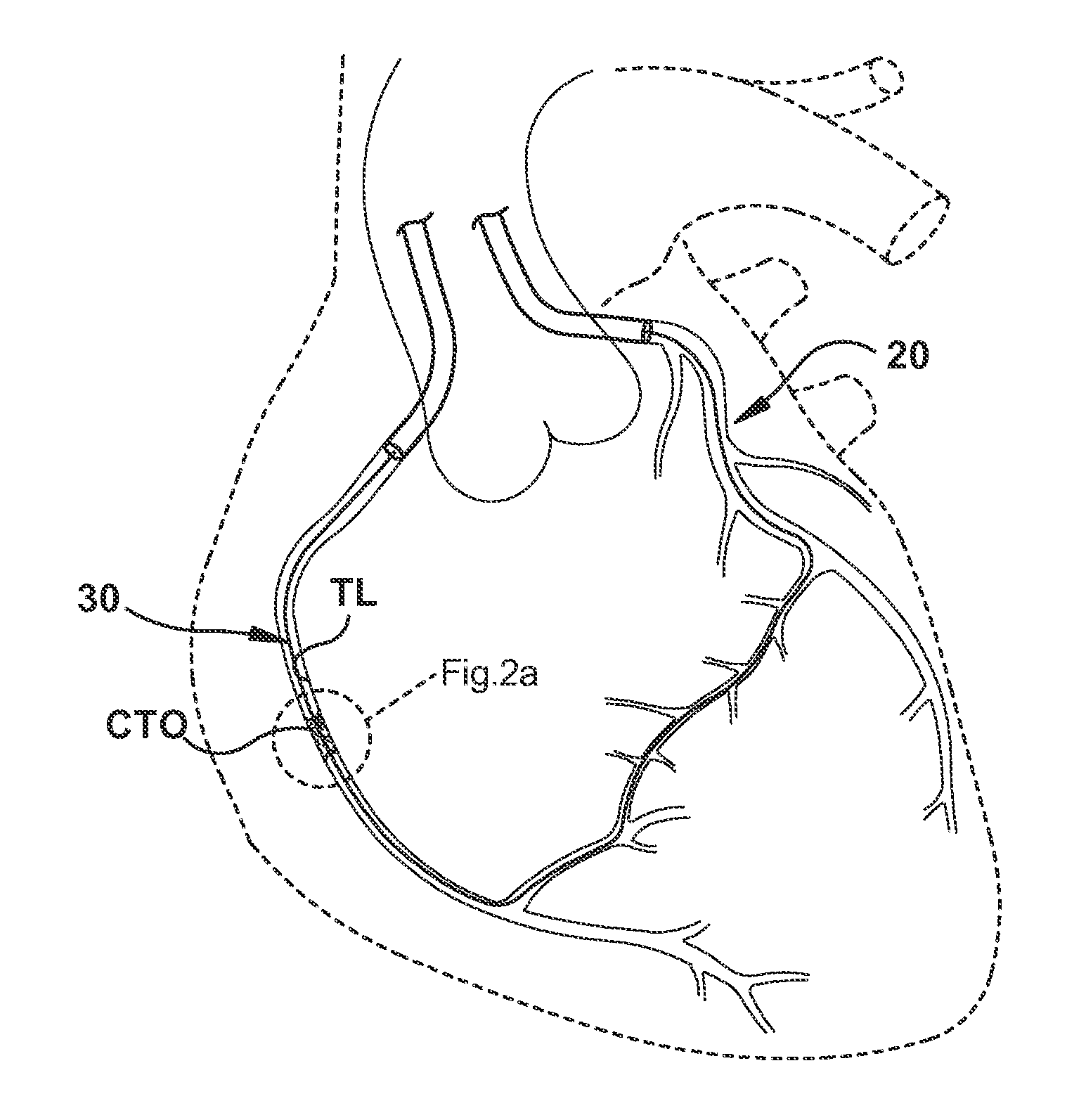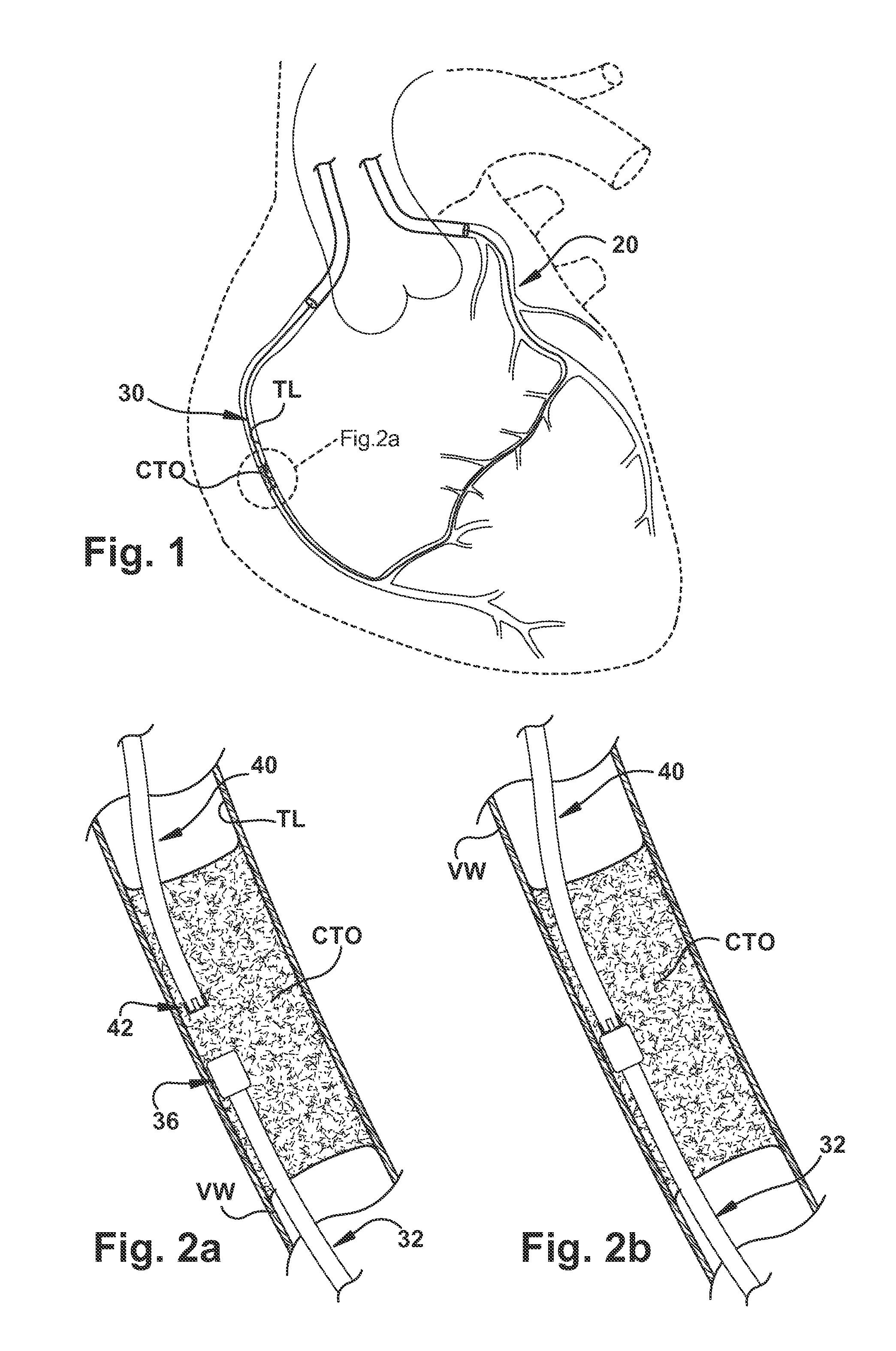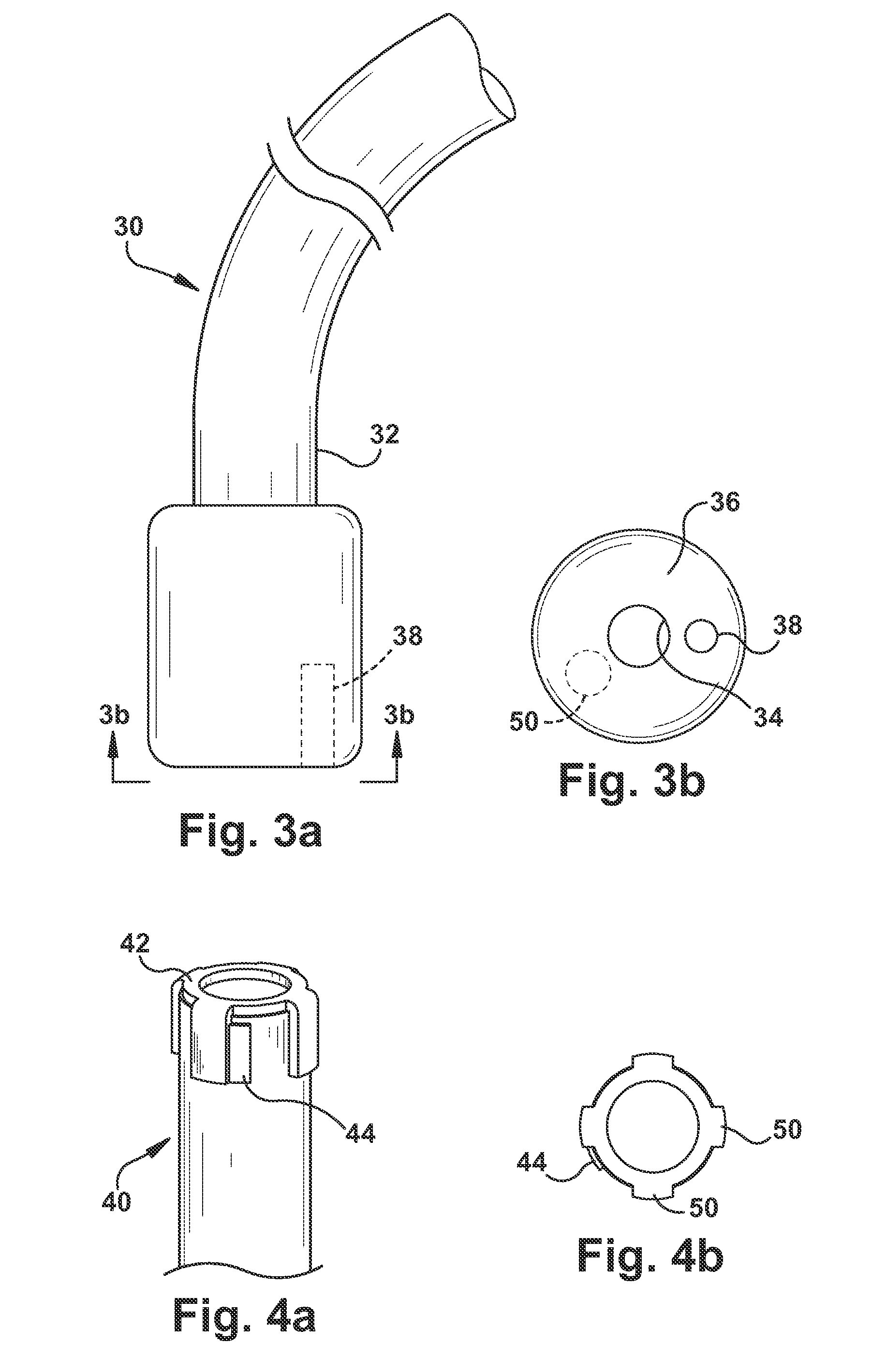Medical Device for Revascularization of Vascular Occlusion and Method for Using Same
a vascular occlusion and medical device technology, applied in the direction of guide wires, catheters, applications, etc., can solve the problems of no longer allowing the passage of blood, cto is associated with angina pectoris, and total occlusion, so as to facilitate the connection, minimize the distance between the electrodes, and facilitate the effect of occlusion
- Summary
- Abstract
- Description
- Claims
- Application Information
AI Technical Summary
Benefits of technology
Problems solved by technology
Method used
Image
Examples
Embodiment Construction
[0023]The present application provides an improved medical device 30, system and method for revascularization of a complete total occlusion CTO within a vessel V of the type schematically illustrated in the human vascular system 20 of FIG. 1. The device 30 includes a first guide 32, which may be a catheter including a central lumen 34 capable of facilitating passage of another catheter or guide wire, or a guide wire, and having a magnetic connection tip 36 to provide for delivery of energy at the tip. In the embodiment of FIGS. 3a and 3b, radiofrequency (RF) energy may be delivered or received via an electrode 38 mounted near the tip 36. As shown in FIG. 1, the first catheter or guide wire 32 is advanced from the antegrade direction to the CTO proximal cap or end of the CTO. One or more magnets or magnetic alignment elements, shown in FIGS. 3a, 3b and 5a, 5c, are secured within or on the catheter connection tip to provide the desired positioning or alignment of the catheter tip with...
PUM
 Login to View More
Login to View More Abstract
Description
Claims
Application Information
 Login to View More
Login to View More - R&D
- Intellectual Property
- Life Sciences
- Materials
- Tech Scout
- Unparalleled Data Quality
- Higher Quality Content
- 60% Fewer Hallucinations
Browse by: Latest US Patents, China's latest patents, Technical Efficacy Thesaurus, Application Domain, Technology Topic, Popular Technical Reports.
© 2025 PatSnap. All rights reserved.Legal|Privacy policy|Modern Slavery Act Transparency Statement|Sitemap|About US| Contact US: help@patsnap.com



